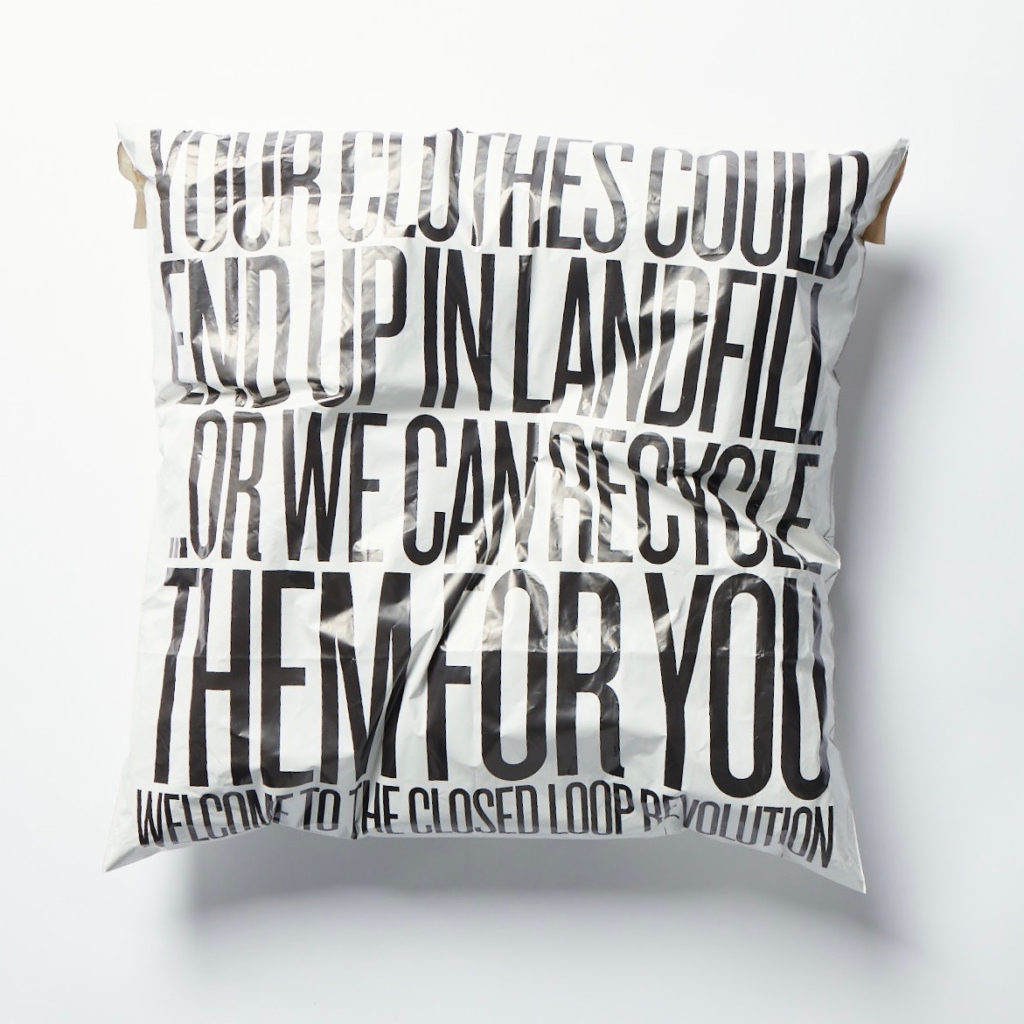The waste created by fast fashion is so staggering in scope that it’s nearly impossible to visualize. That’s prompting innovative brands to chart a new path forward—one that diverts fashion waste from landfill, instead using it to create a more circular, sustainable system.
Brands such as SuperCircle, For Days and Evrnu are developing new models to educate industry players and shoppers about the benefits of circularity. But the reality is that, without curbing fast fashion production, reducing overall textile waste will be incredibly difficult.
Between 2000 and 2015, global clothing production doubled, according to a 2017 report by the Ellen MacArthur Foundation. In the same time frame, the average number of times each item was worn plummeted by 36% as cheaply made garments flooded the market and excess inventory was, in some cases, sent directly to landfill.
Despite greater awareness of the problems fast fashion is creating, production continues to soar as faster fashion websites maintain popularity. It comes with a high price: an estimated 3.3 billion tons of greenhouse gas emissions are generated by the global apparel industry each year, according to a 2020 UNEP report.
“There is a huge movement within retail to take the industry circular—to take accountability for the massive waste problem that’s been created,” said Stuart Ahlum, co-founder and COO of SuperCircle, which launched publicly in May.
SuperCircle is a b-to-b platform that handles the logistics of recovering, sorting and recycling fibers for brands. The company is building new and better ways of recycling textiles, creating logistical solutions for brands to process used and worn-out garments and educating consumers on what to do with clothes they don’t want anymore.
Removing barriers to entry
Somewhat similar to a traditional recycling facility, SuperCircle helps brands work with consumers to get used clothes into its circular system. It then sorts the garments by material, sending them off to be turned into new clothes or down-cycled into things like insulation or car seats.
Right now, that kind of system is only happening on a very small scale. Around 85% of textile in the U.S. ends up in landfill, according to the EPA. But that’s likely a low estimate given how much of Americans’ secondhand clothing ends up in makeshift landfills like those in the Chilean desert or along the Ghanaian coastline. SuperCircle estimates landfill-bound clothing at 97%, and less than 1% of used clothing actually gets turned into new garments, according to the Ellen MacArthur Foundation.
For tentree, MATE the Label and Thousand Fell, working with SuperCircle gives them access to a burgeoning system that’s too costly to do on their own or has been blocked by issues with recycling minimums and reverse logistics capacity.
Prior to partnering with SuperCircle, tentree donated excess clothing to charity—but was troubled by how that system can harm local economies and the environment in Africa and Latin America.
“You cannot guarantee they will not flood other countries with textile waste that ends up damaging local markets,” Kathleen Buckingham, director of sustainability at tentree, told Adweek.
Reducing virgin material and production
Yet, the climate impact of fashion can only be mitigated if less virgin material is used and fewer products are made.
“It is a commonly-held myth that by reusing or recycling more materials, the consumption of virgin resources or new products will automatically go down,” Katrina Caspelich, chief marketing officer for fashion industry watchdog Remake, told Adweek. “Unless there are intentional policies in place to prevent it from happening, it is more likely that the consumption of secondhand and new products both go up.”
At Los Angeles-based For Days, a fashion brand that markets itself as the “first closed-loop clothing brand,” about half of its revenue comes from Take Back Bags. The four-year-old company encourages people to fill up a bag with old clothes that they don’t wear anymore, and send it to For Days’ Texas warehouse in return for store credit that it’s dubbed “closet cash.”

The brand will take any old textiles, and about 95% of what comes through the warehouse via Take Back Bags finds a new home—either through resale, recycling or down-cycling. That other 5% is comprised of textile scraps where sorters are unable to determine the material, or things that weren’t meant for the bag, like hangers or other miscellaneous items, said co-founder and CEO Kristy Caylor.
In addition to its own branded products, For Days works with other brands to help power their recycling programs—similar to SuperCircle. It partners with more than 60 companies including sock brand Bombas, bra brand Harper Wilde and kid and baby-focused brand Maisonette.
Innovating for higher quality recycled materials
For Days also works with Evrnu, which is pioneering new chemical recycling technology to create recycled materials that don’t require additional virgin inputs to make a high-quality fabric.
“Mechanical recycling has always yielded a little lower quality product,” explained Evrnu co-founder Stacy Flynn. “You have to spin it with a high volume of virgin new material. Whereas chemical recycling, if you’re breaking it down to its basic polymer building block, you can basically turn it from a liquid back to a solid. And in that process, you can reorient the polymers and create very high-performing new raw material.”

Evrnu is still young and requires more funding to scale its tech. Right now, it does a small amount of cotton recycling but aims to have an industrial facility set up in South Carolina by early 2025.
Still, the idea of a truly circular system goes beyond simply capturing waste to also reduce virgin input and production.
“The promise of circularity is ‘all outputs become inputs in a closed system,’” Lynda Grose, professor of fashion design and critical studies at California College of the Arts, told Adweek. The only inputs should be “very minimal amounts of raw material to keep things good quality, and energy, of course, and it’s really vastly reduced.”

Source link



